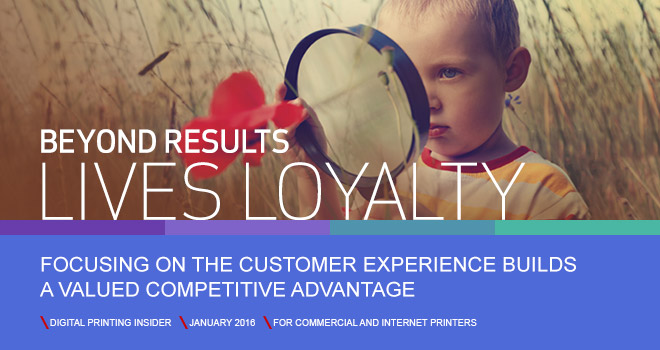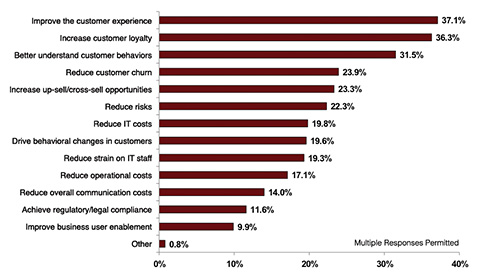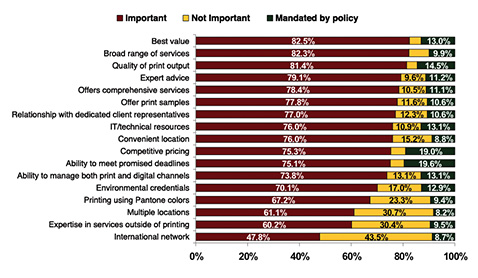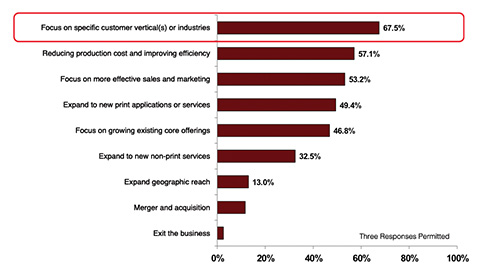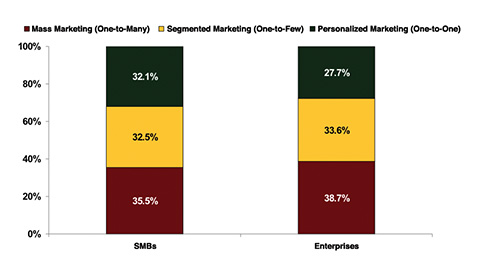2016: The Year of the Customer Experience
A recent article in the Harvard Business Review entitled “The Truth about Customer Experience” defines the customer experience as your customer’s end-to-end journey with you, not just the key touchpoints or critical moments when customers interact with your organization. The customer experience is the cumulative impact of multiple touchpoints over time, which results in a feeling of a genuine relationship — or lack thereof. Customer experience design is the art and science of shaping an experience that customers will appreciate, remember, and share with their friends.
Businesses of all sizes have good reason to focus on the customer experience. Whether improving direct customers’ experiences or the experiences of your customers’ customers with better communication products, a better customer experience delivers bottom-line results. Studies have indicated that a better customer experience can:
- Improve customer satisfaction
- Foster repeat customers and customer loyalty
- Increase customer advocacy and referrals
- Reduce customer churn
- Create a competitive advantage
- Increase revenues and sales
- Build stronger customer relationships
In the year ahead, serving customers, enhancing the customer experience, and driving business profitability will require print service providers to focus on serving customers and improving internal operations. InfoTrends’ 2016 Business Development Strategies Road Map outlines the top areas that print service providers should focus on in the year ahead. It offers key recommendations and insights, based on market research and industry examples, to help print providers outline and plan strategies for 2016. Here’s a summary of key points in InfoTrends’ report, but be sure to read the full article for more ways to enhance your customer experience efforts!
Deliver the Right Customer Experience
Delivering a great customer experience starts with understanding what your customers want and taking action to deliver it. The hard part is taking what you’ve learned and adjusting the way your company works so that your teams, processes, and technologies are capable of delivering on the experience that the customer expects. According to InfoTrends’ 2015 study entitled Customer Engagement Technologies: The State of the Market, North American and Western European enterprises’ top objective for communication investments was improving the customer experience (see Figure 1).
In another InfoTrends study entitled Micro to Mega: Trends in Business Communications, enterprises with 500+ employees reported that the critical factors for selecting a print provider were providing the best value, offering the broadest range of services to enable “one-stop shopping,” quality output, and access to expert advice (see Figure 2).
Focus on Specific Industries to Understand Customers’ Businesses
Understanding a customer’s business has never been more important. Today, customers and prospects research the products and services that they are considering purchasing via the Internet, and this often makes service offerings and pricing transparent. The wealth of online information often prompts buyers to make decisions before they even speak to a sales rep. This means that print providers must find new ways to enhance and add value to the customer experience. Understanding a customer’s unique challenges and opportunities starts with understanding his/her industry.
Print providers recognize that a vertical market focus enables them to target a group of customers in a market where they have expertise. According to InfoTrends’ 2015 Software Investment Outlook, print service providers’ top strategy for steering operations over the next five years will be focusing on specific industries (see Figure 3).
Print providers that focus their attention on a particular industry must fully understand their customers, their customers’ competitors, and the industry at large — its trends, terminology, regulatory and compliance challenges, competitive tendencies, and other key attributes. In short, specializing in a vertical industry makes it possible to build products and services that address unique market needs and position a provider as a partner that is integral to a customer’s success.
Communication Relevance Matters: It’s All About the Data!
Although some say that money makes the world go around, today’s marketers are just as likely to say that customer data makes their world go around. Data offers businesses new opportunities to better understand their customers through a variety of sources, including purchasing behaviors, interactions, demographics, and history. The end objective is to deliver a personalized customer experience that prompts the consumer to take a desired action. InfoTrends’ survey of SMBs and enterprises found that personalization was critical to marketing communications. According to the study, 64% of SMBs and 60% of enterprises indicated that communications would either be personalized (one-to-one) or segmented (one-to-few) (see Figure 4).
Unfortunately, pulling insights from data to deliver a better customer experience is not always easy. Doing it effectively requires skills and knowledge that some businesses are lacking. According to Gartner, 85% of Fortune 500 companies are ill-prepared to exploit big data in their organizations to support these efforts. According to the McKinsey Global Institute, by 2018, there could be a shortage of between 140,000 and 190,000 people with the requisite talent to provide essential data analytics and predictive modeling skills, as well as a shortage of 1.5 million managers and analysts with the ability to leverage the insight to make effective decisions. Yet according to CompTIA, eight in ten executives agree that the ability to harness data would make their businesses much stronger.
This can mean opportunity for service providers that are willing to build, buy, or partner with other organizations to deliver these capabilities. Some print providers are starting to expand their data services. Data-Mail (Newington, CT), one of the nation’s largest direct mail printers, set up a separate company called Intelisent to offer marketers sophisticated data services and personalized one-to-one communications. In addition, the company provides an array of data driven capabilities ranging from data audits to predictive modeling.
Today’s marketers expect to provide a flawless communication experience to their customers that delivers personalized content via the appropriate channel. To accomplish this task, marketers need partners that understand data. Marketers’ pursuit of relevant communications will prompt print service providers to get their data skills in place in the coming year.
InfoTrends’ Final Thoughts
The customer experience is not a fad; it is a concept that is here to stay. Moving forward, developing an effective customer experience will be essential to serving your customers and growing your business. In 2016, the most successful firms will figure out how to retool their marketing and sales efforts to optimize the customer experience and differentiate their businesses in the eyes of prospects and customers. As we head into 2016, ask yourself — will you choose to embrace the customer experience or ignore it?
